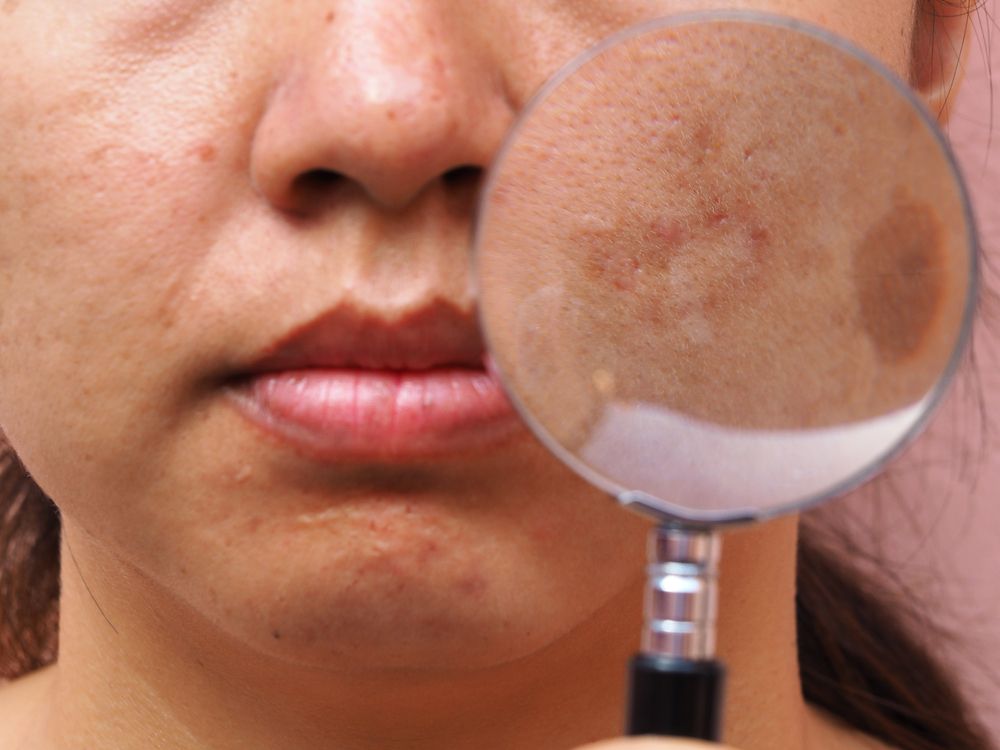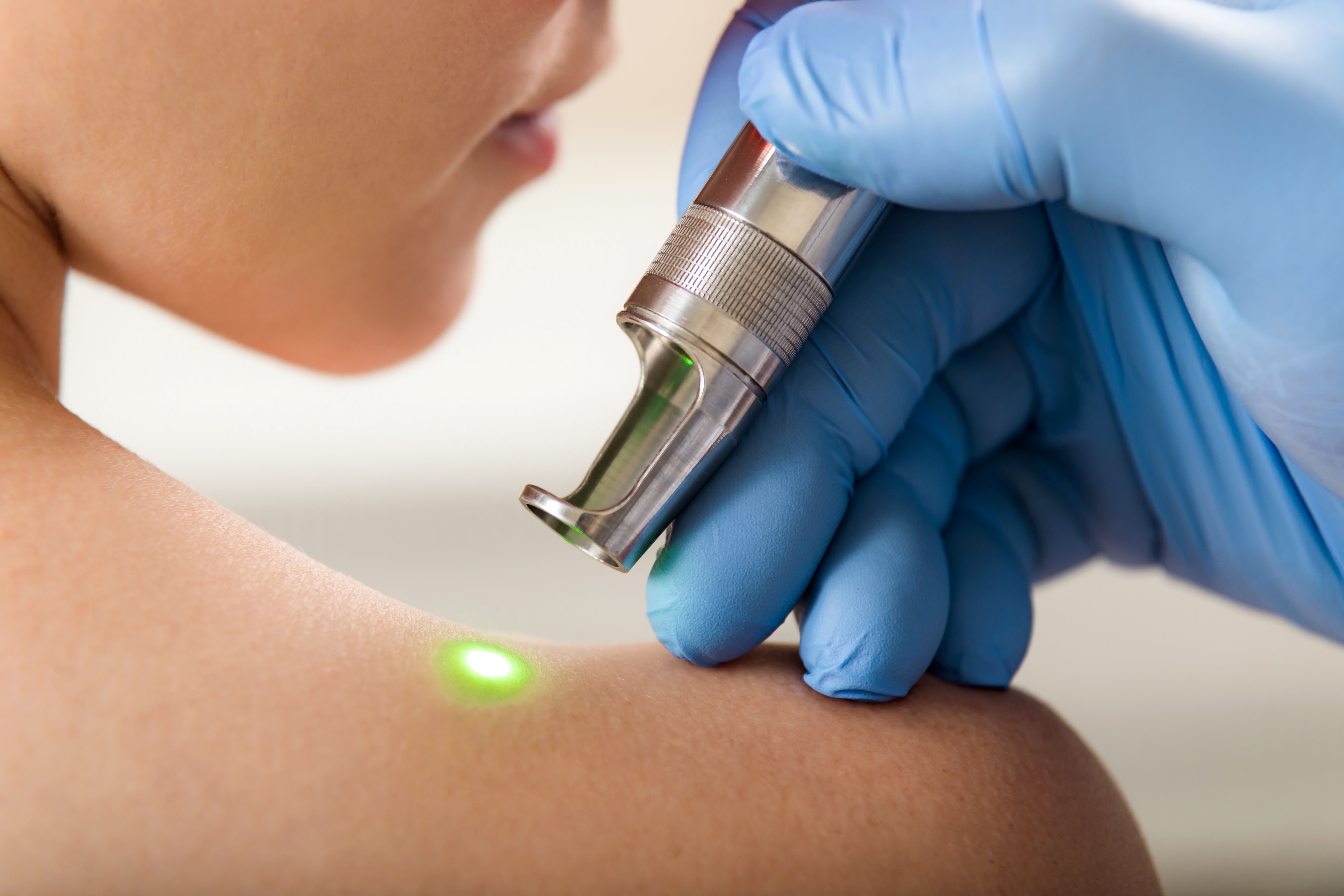- Case-Based Roundtable
- General Dermatology
- Eczema
- Chronic Hand Eczema
- Alopecia
- Aesthetics
- Vitiligo
- COVID-19
- Actinic Keratosis
- Precision Medicine and Biologics
- Rare Disease
- Wound Care
- Rosacea
- Psoriasis
- Psoriatic Arthritis
- Atopic Dermatitis
- Melasma
- NP and PA
- Skin Cancer
- Hidradenitis Suppurativa
- Drug Watch
- Pigmentary Disorders
- Acne
- Pediatric Dermatology
- Practice Management
- Prurigo Nodularis
- Buy-and-Bill
Article
Treatments, triggers and tranexamic acid
Author(s):
Topical treatments with tranexamic acid offer a safe, effective option for melasma, hyperpigmentation.
©Nguklaw,Shutterstock.com

The causes of melasma aren’t as clear as what triggers it, according to authors of a recent study1 that examines the combination of tranexamic acid, kojic acid and niacinamide as a treatment option. Triggers include sun exposure, pregnancy, oral contraceptive and steroid use, photosensitizing drug use, hepatopathies, skin inflammation and stress.
Today’s melasma treatment options offer often temporary results because melasma is likely to return with sun exposure. Those treatments include topical depigmenting agents, such as hydroquinone, tretinoin, azelaic acid, superficial peels and lasers.
Journals have published several studies in recent months looking at tranexamic acid in the treatment of melasma. A recently published study2 by researchers in Pakistan found that combination treatment with oral and topical 3% tranexamic acid was significantly better than oral tranexamic acid with 20% azelaic acid for treating melasma. Another study3 suggests a topical 5% tranexamic acid solution treats melasma as effectively as 3% hydroquinone cream. And patient satisfaction was higher in the tranexamic acid group than among those receiving hydroquinone cream.
A Closer Look
A new serum containing tranexamic acid, kojic acid and niacinamide notably improved facial hyperpigmentation, including melasma, as well as skin texture and tone, according to a 12-week study1 recently published in the Journal of Drugs in Dermatology.
Brazilian researchers evaluated the topical containing 3% tranexamic acid, 1% kojic acid, 5% niacinamide and 5% hydroxyethylpiperazine ethane sulfonic acid (Discoloration Defense, SkinCeuticals). They studied 55 Brazilian women, 27 to 60 years of age, with Fitzpatrick skin types I through IV, who were instructed to apply the serum in the morning and evening on a cleansed face for 12 weeks. Women participating in the study also were given a sunscreen (SPF 70), which they applied to the face in the morning and as needed.
Researchers evaluated changes in melasma in 48 of the subjects who had melasma before treatment and at weeks 2, 4, 8 and 12. They studied changes in post-inflammatory hyperpigmentation and hyperpigmentation, according to the study.
The researchers also conducted an in vitro study with human epidermal melanocyte cultures to assess tranexamic acid’s mechanism of action.
They found that subjects’ melasma and hyperpigmentation improved an average 60%, while post-inflammatory hyperpigmentation decreased an average 81%. Researchers also noted a 54% improvement in skin tone and 59% improvement in skin homogeneity after 12 weeks of daily serum application.
Prior studies have shown that kojic acid and niacinamide used in combination or alone effectively reduce hyperpigmentation, including melasma. In this study, the researcher established that tranexamic acid inhibits release of inflammatory mediators, namely prostaglandins, thereby controlling pigmentation.
“We demonstrated that 50-100 µM [tranexamic acid] suppressed the melanogenesis of [prostaglandin E2-] PGE2-stimulated melanocytes in culture,” the authors write.
That tranexamic function is highly relevant when treating melasma, hyperpigmentation and post-inflammatory hyperpigmentation.
Subjects tolerated the treatment well, according to the study. And the women studied highly rated the topical for efficacy and aesthetics, giving the serum an overall satisfaction score of more than 90% at all time points. That’s encouraging, the authors write, given patients’ general lack of satisfaction with nonprescription topical discoloration treatments.
Disclosures:
Three of the main study’s authors have been SkinCeuticals consultants. Several authors are L’Oréal employees and one was a SkinCeutical employee at the time of the study.
References:
- Desai S, Ayres E, Bak H, et al. Effect of a Tranexamic Acid, Kojic Acid, and Niacinamide Containing Serum on Facial Dyschromia: A Clinical Evaluation. J Drugs Dermatol. 2019 May 1;18(5):454-459.
- Malik F, Hanif MM, Mustafa G. Combination of Oral Tranexamic Acid with Topical 3% Tranexamic Acid versus Oral Tranexamic Acid with Topical 20% Azelaic Acid in the Treatment of Melasma. J Coll Physicians Surg Pak. 2019;29(6):502-504.
- Janney MS, Subramaniyan R, Dabas R, Lal S, Das NM, Godara SK. A Randomized Controlled Study Comparing the Efficacy of Topical 5% Tranexamic Acid Solution versus 3% Hydroquinone Cream in Melasma. J Cutan Aesthet Surg. 2019;12(1):63-67.
Newsletter
Like what you’re reading? Subscribe to Dermatology Times for weekly updates on therapies, innovations, and real-world practice tips.





